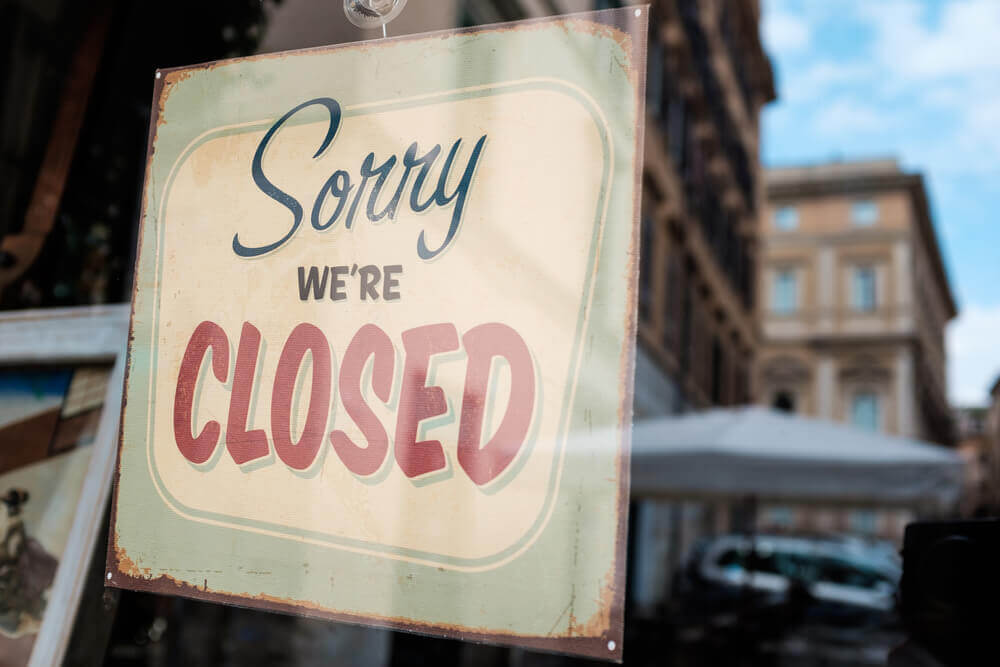Bankruptcy can support a business or individual buried in debt, letting them work with creditors and start anew. For creditors, bankruptcy presents an opportunity to collect debts that they would have otherwise written off.
While there are many types of bankruptcies, we will focus on three of the most common ones: Chapter 7, Chapter 13, and Chapter 11.
Chapter 7 Bankruptcy
A Chapter 7 bankruptcy is the fastest, simplest, and most common type of bankruptcy.
Businesses that declare a Chapter 7 bankruptcy have reached the point where restructuring or reorganization would not help them, and selling most of their assets is the only way to pay their creditors.
Just about every debtor who filed for a Chapter 7 bankruptcy can receive their unsecured debts discharged. The process also works pretty similarly for individuals.
However, if Chapter 7 may not suit your situation, you can always try making other deals with creditors. Credit counselors can help you develop debt repayment plans without having to file for bankruptcy.
Advantages
Completing a Chapter 7 bankruptcy can only take four to six months from filing to final discharge since there is no need to file for a repayment plan.
Additionally, the filer can keep some of his private properties that are not included in the liquidation, helping the debtor continue making a living. Such exemptions can vary, depending on the state. Exempted properties can include home equity, pension, your car, clothes, and some furniture.
In most situations, Chapter 7 bankruptcy cases became regarded as no-asset cases because all the debtor’s assets usually see exemption from liquidation.
Another thing you can do as the Chapter 7 filer is to establish a reaffirmation agreement with the creditor. In a reaffirmation agreement, you are accepting the responsibility for a debt so you can keep a particular secured debt.
Simply put, you are making an agreement with the creditor to pay all or a portion of the money owed. In return, the creditor will not repossess the property securing the debt, provided that the payments are made. Such a deal allows you to keep, for example, assets that would be sold otherwise.
Disadvantages
In a Chapter 7 bankruptcy case, while there are specific properties or assets that you can keep as the debtor, there are also particular properties that you are not allowed to keep, as they are not exempted from liquidation.
Creditors can also pursue your co-signers. As the debtor, Chapter 7 protects you from creditor collections by the automatic stay. However, Chapter 7 can’t do the same for your co-signers, allowing creditors to pursue them instead. Additionally, you can only file for Chapter 7 once every eight years.
Another disadvantage of Chapter 7 is that not everyone can file one. To qualify for a Chapter 7 filing, you need to undergo a means test.
The test involves determining whether your monthly income is lower than $12,850 or 25% of your unsecured debt. Unsecured debt is any debt created without any collateral guaranteed to the creditor, such as a mortgage, car loan, or student loan.
If the test showed that you have more income than required, the court might not approve of a Chapter 7 filing or turn it into a Chapter 13 filing instead.
Chapter 13 Bankruptcy
A Chapter 13 filing, also referred to as the wage-earner plan, allows debtors to keep more of their properties on the condition that they allocate the next three to five years of their disposable income to the repayment plan.
Under Chapter 13, you as the debtor will need to propose a repayment plan to gradually pay certain debts and a portion of other debts. The repayment plan usually includes a schedule of fixed payments that you need to provide to the trustee regularly, typically monthly.
Advantages
Chapter 13 helps homeowners delay or stop the foreclosure of their houses and complete their mortgage payments. Other debts can also be restructured in this chapter, so the debtor will have more time to settle them.
Your co-signers have protection from creditors under Chapter 13’s automatic stay. That means creditors cannot turn their collection efforts to them once Chapter 13 is filed.
Creditors only receive the payments from the debtor through the trustee, which eliminates the need to meet or communicate with the borrower directly.
Disadvantages
Filing for a Chapter 13 bankruptcy also has some disadvantages, with the most notable being that the case takes a long time, usually three to five years before you complete it and get discharged of debts. Another downside of Chapter 13 is that you must repay whatever debt you owe.
Chapter 11 Bankruptcy
Chapter 11 usually calls for restructuring a debtor’s business matters, debts, and assets. That is also the reason this chapter is known as the reorganization bankruptcy. Individuals, such as sole proprietors, can also use this, but they need to follow a repayment plan.
A Chapter 11 filing will be an ideal option if you’re a business corporation, a partnership, or a joint venture. Additionally, small businesses can file for Chapter 11 under two specific categories.
Advantages
Like Chapter 13, Chapter 11 lets debtors propose a plan to restructure their debts, so they avoid going out of business while they pay creditors. This is not only good for the filer, but also for the creditor who may not have prospects of repayment.
In this chapter, the debtor usually assumes the role of trustee, making him the debtor in possession. The debtor in possession can continue running his business and, with the court’s approval, borrow new money.
The trustee will also work with creditors to make a repayment plan. The repayment plan needs a majority vote from the creditors before becoming effective.
Disadvantages
Chapter 11 is perhaps the most complex, most expensive, and longest form of a bankruptcy proceeding. Major companies usually file for Chapter 11 when they need bankruptcy protection.
The court fees are high, and the attorney fees can be higher than the court fees. You can expect to spend at least $10,000 on legal fees, but considering the complexities in Chapter 11 bankruptcies, the amount you may need to spend could total millions.
Moreover, Chapter 11 cases can also last for a long time. There is no specific limit on the duration of a Chapter 11 case. Some cases finalize within months, while the bigger and more complicated Chapter 11 cases can take about five years to wrap up.










